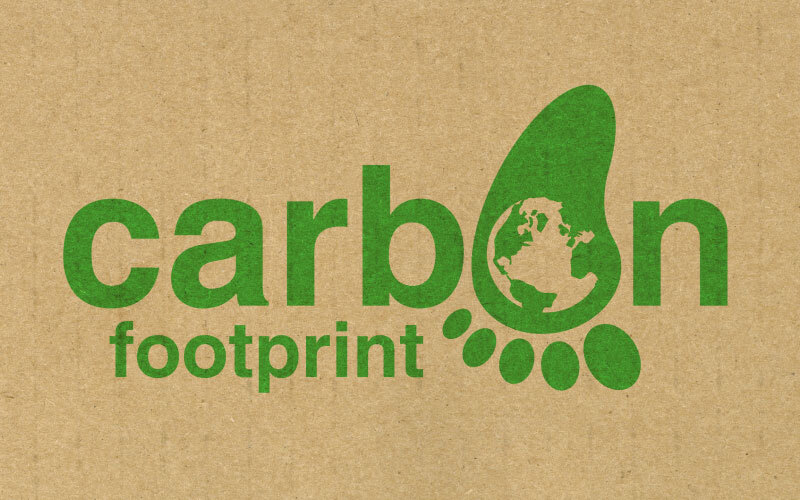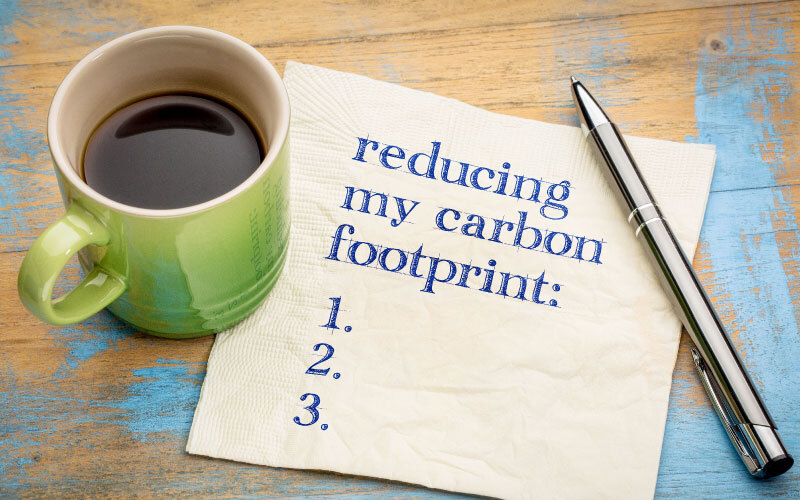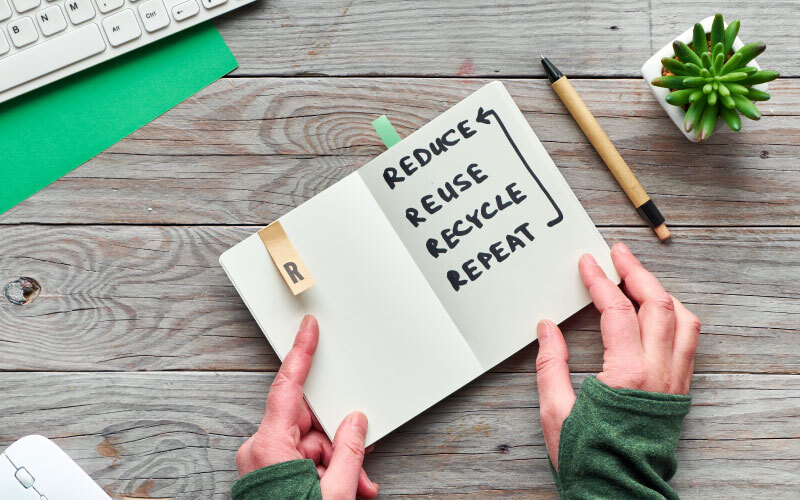The carbon footprint of your business is probably not as easy to measure as your foot size. If one decides how your feet will look and feel, the other decides how long the earth has to survive. Wow. Sounds serious, doesn’t it?
Well, it is.
“There is no planet B” Unless you are Elon Musk on his way to building a colony on Mars, the smarter and more practical step for you might be to take care of the planet you are on right now.
Even small businesses can have a larger impact on the environment. It is up to the founder of the business and its employees to build a brand that can be environmentally conscious. Being conscious starts with recognizing your impact on the environment i.e your carbon footprint.
So what is your carbon footprint, why is it important and does knowing it really help your small business too? Let’s know more.
Contents
What is carbon footprint and why does it matter?
At the Glasgow COP26 UN climate conference that took place n 2021, India pledged to reduce their total projected carbon emission by 1 billion tonnes by 2030 and also promised to work towards becoming a carbon-neutral country by 2070. Here’s a deep dive into everything that India did right (and did not).
As Indian citizens, it becomes our moral responsibility to not only help our nation achieve this goal, but also achieve the larger goal of preserving our precious planet.
In doing so we need to start becoming conscious of how our daily actions impact the environment.
A carbon footprint is the total amount of greenhouse gases that the production or use of a product/ service emits.
It is important to understand the individual and the total carbon footprint of your business so that we can work collectively towards reducing it.

Your decision to help the earth today will have a ripple effect across generations to come.
As for your eCommerce business? Being more environmentally friendly can have benefits for your small business too.
Business benefits of reducing your business carbon footprint
1. More profits
The common misconception is that switching to renewables and sustainable methods can be expensive.
The truth is that it is expensive, but it is a one-time investment. It’s a structural change that has a lifelong positive impact on your bottom line. The math is simple. The less you waste the more you save. In fact, a study by McKinsey has shown that increasing the efficiency of resources can improve operating profits by up to 60%.
2. Efficiency
Adopting circular methods of preserving energy and reducing waste, helps build a sustainable infrastructure that is climate-friendly. No shortcuts and no short term changes can ever bring about the efficiency that having a structurally sound sustainable organisation can.
Employees and their leaders become attuned to climate needs and hence are instinctively able to lower their carbon emissions while maintaining profits.
3. Better customer relations
Millenials form 34% of India’s population. The purchasing power of roughly 440 million stands at a rough $330 billion annually. Millennials and Gen Z form the heart of India’s growth trajectory. And what do these generations want?
Brands that are more conscious.
Studies and surveys repeatedly show that millennial consumers want to buy products that are aware of their environmental impact, the communities they are helping and their larger brand narrative.
Consumers today form emotional bonds with brands that are built upon helping the earth become a little bit better. So being environmentally friendly has the long term benefit of building a base of loyal customers to whom you can sell online.
Calculate your business carbon footprint
There are different internationally recognised standards that you can use to understand your carbon footprint. Here are the most basic calculations that you can do.
Choose a time period of 12 months where you measure –
- Electricity use
- Gas use
- Water bills
- Electricity bills
- Fuel used in vehicles
- Waste disposal/recycling
Don’t just record your own data, but the data of your employees. It might seem cumbersome at the beginning but slowly it becomes a part of your lifestyle. You also become more aware since you can visualise what you are emitting.
Once you have this data, you need to convert it using “emission factor”. An emission factor is a value that helps you covert the data you have collected into greenhouse gas emissions.
Data x Emission Factor = Greenhouse Gas Emissions
Here is a quick guide along with the list of emission factors so that you can calculate a rough estimate of what your carbon footprint is. Download here.
You can also use online converters like 8 Billion Trees.
Your goal should be to reduce this total number every year!
5 actionable tips to reduce your business carbon footprint

1. 3 Rs
It’s been decades since the 3 Rs have been in discussion. But its importance still remains the same, if not more. For every business and individual, the core basics of becoming green start by following the three Rs –
Reduce: Simply consciously reduce the amount of waste that you can create. Throughout your entire eCommerce supply chain, check for green practices. Start from your suppliers.
Ask these questions:
- Are you sourcing sustainably?
- Does your supplier have strong ethical environmental standards?
- Are the employees of your supplier getting fair wages?
Reuse: Why throw away a perfectly good box if that can be used for packaging or storing things later? That’s just one example out of hundreds where you can reuse certain materials so that you can get more benefits out of them before throwing them out.
Instamojo stores like June Cosmetics, Ae Re Saakhi, and Wildberry Organics have all been following the previous practice of reusing materials like glass bottles, scrap clothes and packaging material to reduce their overall business impact on the environment.
Recycle: Identify and keep aside all the material that can be recycled. This can be plastic, newspapers, packaging paper and boxes, water bottles etc. There are government provided recycling bins in most public places now. Most neighbourhoods also have the friendly “Kabadiwala” who would buy your recyclable waste from you.

2. Reduce your food waste
In India, millions go hungry every day. In the face of that, wasting food can be an immoral decision. If you sell food online or in the catering services, you need to be mindful of the food waste that is generated at every stage of the food system.
1. Purchase from businesses that support local farmers and the community
2. Indulge in compost programs so that your food can be recycled as fertilisers
3. Don’t immediately throw away leftovers
4. Use proper containers so that food stays fresh for longer
Be conscious of the cutlery and packaging material that your business is using when delivering the food
Here are some simple yet effective ways to reduce food waste as listed by the Food and Agricultural Organization of the United Nations
Related read: How to sell food online in India: A complete guide to start an online food business
3. Educate your team
You cannot expect long term change unless there is true knowledge. As a business owner, you are the boss, You can either just tell your team members to follow certain practices or you can teach them the value of following these practices.
Civil conversations around the topic of climate change and the individual responsibility of each citizen result in long-lasting impacts even beyond your organisation.
4. Green packaging and delivery
Landfills all over the world are filled with single-use containers and packaging. Here are a few practices your small business needs to adopt asap:
- Go for biodegradable packaging
- Try branded packaging that can be reused. Think of the Chumbak watch cases or Glass bottles by the milkshake brand – Keventers. These can easily be reused and also helps in brand recall.


- Use boxes that are the appropriate size for the product to cut down on wastage
- Encourage bulk orders to minimise packaging and fuel waste. On Instamojo, you can offer product bundles so that the consumers are incentivised to buy multiple items at one go.
- Avoid packaging that has bubble wrap lining (replace it with crumpled cardboard), styrofoam peanuts (Try shredded paper)
- Check with your delivery partner on their green policies
Related read: 5 effective packaging tips from CEO of Printo + BONUS FREEBIES
5. Go digital
50% of the world’s business waste just consists of paper. In a world where there are enough digital tools and platforms, why waste precious resources? Not to mention, keeping track of paper records manually can have a larger margin for errors and delays.
With an online store on Instamojo, you do not need to worry about paper trails. You can manage your inventory, invoices, tax filings, customer communications, marketing and analytics ALL from a single platform.
See this video to know just how easy it is to create a free online store on Instamojo.
Start your sustainable online journey with Instamojo.

